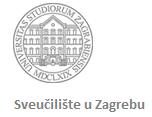Home » 7. semestar i naslovni DV – NASTAVNIČKI SMJER – dvopredmetni
Category Archives: 7. semestar i naslovni DV – NASTAVNIČKI SMJER – dvopredmetni
Jezik i kognicija: od teorije do primjene
Instructor: Associate professor Renata Geld, PhD Course title: Language and cognition: from theory to application (Jezik i kognicija: od teorije do primjene) Language: English Number of hours per semester: 30 hours ECTS: 4 credits Level: graduate (kolegij je otvoren svim studentima na diplomskoj razini anglistike) Course content: Students attending this course will be encouraged to […]
Jezik i kognicija: od teorije do primjene (arh.)
Instructor: Assistant professor Renata Geld, PhD Course title: Language and cognition: from theory to application (Jezik i kognicija: od teorije do primjene) (do 2020./21.) Language: English Number of hours per semester: 30 hours ECTS: 4 credits Level: graduate (kolegij je otvoren svim studentima na diplomskoj razini anglistike) Course content: Students attending this course will be […]
Proces ovladavanja jezikom
DIPLOMSKI STUDIJ ANGLISTIKE – NASTAVNIČKI SMJER DVOPREDMETNI STUDIJ 1. semestar Naziv kolegija: PROCES OVLADAVANJA JEZIKOM Nositelj kolegija: dr. sc. Stela Letica Krevelj, docent Nastavnici: dr. sc. Stela Letica Krevelj, docent ECTS-bodovi: 3 Jezik: engleski Semestar: I. semestar diplomskog studija Status: obvezni za nastavnički smjer Oblik nastave: 2+2+0 Uvjeti: — Ispit: Pismeni Cilj: Studenti će steći […]



